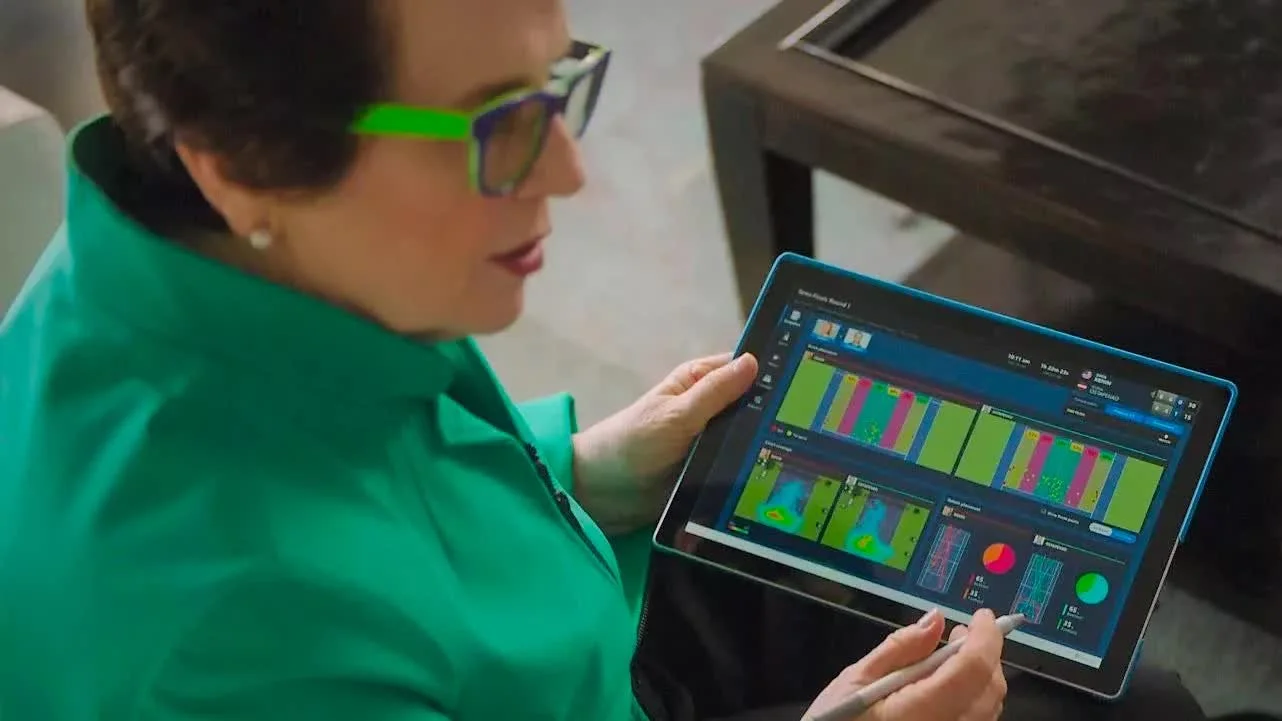Learn more about Sports related STEM Careers!
Madison Hafitz
-
Title: Senior Program Manager- Kilometer Kids & Youth Running
Tell us about your role:
My job includes a wide range of responsibilities including curriculum development and educational resource creation, coach recruitment and training, equipment inventory and management, participant registration and administration, budget management, program evaluation, data analysis, grant writing and reporting, and community outreach.
How did you get into this type of work?
I’m devoted to this work, sports-based youth development, because of the way sports taught me about life. I went on to become a collegiate soccer player, and playing at that level is not the path for everyone, but I know that I would not be the person I am today without the values and life lessons I learned on the field, on the court, on the track, etc. at a very young age. They helped me to be a stronger student, a kinder friend, a harder worker, and just an overall better human. Being an athlete is where I found community, it’s where I learned about the importance of teamwork, resilience, and commitment, and truly how to feel confident in myself.
How does your STEM education help with your day-to day responsibilities?
My educational background is in public health, specifically in health behavior and health education, and this lens has shaped my approach to managing a sports-based youth development program. I rely on the use of the internet, computers, and software programs to conduct many of my day-to-day tasks as a program manager. While I do not build physical structures or machines in my profession, my role requires critical thinking, creativity, and problem-solving skills. Whether I am managing my program’s budget, looking at my equipment inventory, conducting an evaluative site visit, or analyzing post-program survey results, math is a tool that is critical to understanding the sustainability and impact of my program.
Where do you see STEM in sports?
Science helps us to understand how our bodies work and how to appropriately fuel them for peak performance. Engineering allows for the creation of the equipment we play with and the surfaces we compete on. Technology allows us to watch old game tapes to prepare ourselves for an upcoming match. And Math allows us to simply keep score or look at our statistics to see how we are improving from race to race. STEM touches every aspect of sports.
What is the thing that excites you most about your work?
What excites me most about my work is connecting with people and empowering communities through sports. Coaches for Kilometer Kids are members of the community they work in. I love that Kilometer Kids, through this model, can build and transform communities through sport by supporting and empowering our coaches to continue to foster and build that sense of camaraderie and spirit within their own community.
What’s the most surprising thing about your role?
It has been a surreal experience to go from determining what we wanted this program to become, to seeing that in action. My favorite part of every season is getting to go out and visit our program sites across the state of Georgia to participate in practice with all of our Kilometer Kids.
Please share any anecdote from your career that may inspire a student who is interested in STEM to pursue a career in sports.
The best career advice I can give to someone is to find something you are passionate about and determine what knowledge and skills you need to be able to become a leader in that space. For me, that passion was the interconnectedness of sports and helping people, and the way to better prepare myself for a career in that arena was to build my STEM foundation through pursuing a Master’s degree in Public Health.
Jamie Capel-Davies
-
Title: Head, International Tennis Federation, Science & Technical
Tell us about your role:
I help the ITF to make/review rules and regulations for tennis, test/introduce new technology/equipment and try to make it more popular/entertaining.
How did you get into this type of work?
I have an engineering degree and have always been interested in sports.
How does your STEM education help with your day-to day responsibilities?
It has enabled me to design experiments/standard tests for equipment/technology, analyze results/data, model/evaluate changes to the game, break down problems and solve them.
Where do you see STEM in sports?
Innovation, improvement and accessibility.
What is the thing that excites you most about your work?
There is always a new challenge, and it is rewarding to see the outcomes of projects become part of the game, whether it’s in elite tournaments (e.g. line-calling systems) or at grassroots level (e.g. introductory/learner tennis balls).
What’s the most surprising thing about your role?
It’s not something people typically think of as a job (not sure if this is a good thing or not!). That is, many people are surprised to learn that there is group of researchers working on the Rules of Tennis and how it should be regulated and developed.
Please share any anecdote from your career that may inspire a student who is interested in STEM to pursue a career in sports.
When we first considered introducing player analysis technology into tennis, we had different companies demonstrate their products to help us decide if we thought they would be a benefit to the game, or not. It was exciting to be able to try out the technology before their general release.
Caroline McKee
-
Title: Senior Software Engineer, Machine Learning – Basketball Data
Tell us about your role:
As a Senior Software Engineer specializing in Machine Learning for Basketball Data, my work is an exciting blend of basketball and data science, modeling work, and software engineering. I work primarily with 3D player pose data- our objective is not only to generate traditional post-game reports but also to build a live system to provide these insights in real-time during games.
How did you get into this type of work?
I have been a basketball enthusiast since my youth, including playing at a competitive level. During my studies in Computational and Mathematical Engineering, I specialized in computer vision and statistical modeling, and soon realized the vast potential they held in revolutionizing sports analysis.
How does your STEM education help with your day-to day responsibilities?
The theoretical knowledge I gained through my degree is invaluable when dealing with complex modeling tasks, as well as for the software engineering side of the job. Additionally, general problem-solving skills and logical thinking, fundamental in STEM education, are crucial when troubleshooting issues or devising novel approaches to data analysis.
Where do you see STEM in sports?
From enhancing player performance and reducing injuries through biomechanics and data analysis, to changing how fans interact with sports via virtual and augmented reality, STEM is deeply embedded in the sports industry. This continued merging of STEM and sports will not only transform the way games are played and strategies are formulated but also how fans experience and interact with the sport they love.
What is the thing that excites you most about your work?
What excites me most about my work is the opportunity to reveal fresh insights about basketball which analysts and fans alike may never have previously considered, as well as the opportunity to redefine fan engagement. We're pushing the boundaries with 3D pose-driven insights, while also developing innovative ways for fans to interact with and understand the sport.
What’s the most surprising thing about your role?
Our work often intersects with sports analysts and individual team representatives, each bringing their unique perspectives to our initiatives. This interdisciplinary collaboration not only enhances the relevance of our work but also often sparks unique insights and discussions, bringing value that might not have been anticipated from a purely technical perspective.
Please share any anecdote from your career that may inspire a student who is interested in STEM to pursue a career in sports.
We had the opportunity to analyze data from the playoff series between the Lakers and the Warriors. Through our models, we found a striking pattern: Anthony Davis of the Lakers had spent a significantly larger portion of his time in the paint when playing against the Warriors as compared to other teams (even more specifically, a significantly larger portion of his time was spent in the paint when the Lakers won the game, as opposed to when they lost). This insight, shared with sports analysts, underscored the kind of nuanced understanding that data analytics can bring to interpreting game strategies.
Learn more about a day in the life at BWT Alpine F1 Team
The BWT Alpine F1 team has partnered with Microsoft to analyze and do more with the data they are collecting every time a car gets tested. Take a look at the BWT Alpine F1 Team Factory and how they use Microsoft Azure technology.

Learning vital skills through STEM and sports
Learn more about Microsoft's sports partnerships that encourage students to utilize the principles of STEM through sport. Working with pro sports and community initiatives, Microsoft Unlocked shows students how to succeed in multiple aspects of life through innovative activities.

Track and STEM
Atlanta Track Club is working with Microsoft Unlocked to create exciting activities that mix technology and sports, like running. Learn more about the activities and programs that show kids how technology and sport can help them succeed.
Learn more about how athletes from various sports have partnered with Microsoft to improve their game









